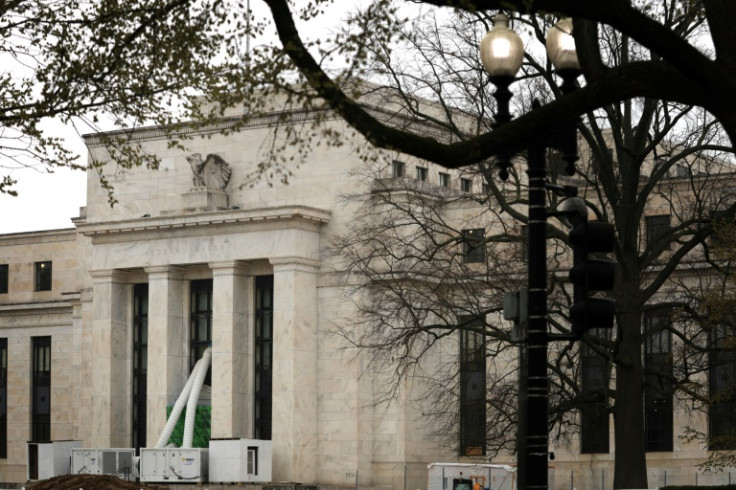US Federal Reserve Keeps Interest Rates At 23-year High

The US Federal Reserve held interest rates steady for a sixth straight meeting on Wednesday, keeping the level at a 23-year high to fight stubborn price increases.
At the end of a two-day meeting, the central bank decided unanimously to keep the benchmark lending rate unchanged at 5.25-5.50 percent, citing a "lack of further progress" towards its two percent inflation target.
"The economic outlook is uncertain, and the Committee remains highly attentive to inflation risks," the Fed said in a statement.
For months, the US central bank has held its benchmark lending rate at a high level to cool demand and rein in price increases -- with a slowdown in inflation last year fueling optimism that the first cuts were on the horizon.
But inflation has accelerated, throwing cold water on hopes of an early rate cut this year.
The central bank said it does not expect to lower rates until it has "greater confidence" that inflation is moving sustainably towards its target.
At a press conference, Fed Chair Jerome Powell said: "It is likely that gaining such greater confidence will take longer than previously expected."
While the central bank is prepared to hold rates at a high level for as long as appropriate, Powell added that it is "unlikely that the next policy rate move will be a hike."
He maintained that monetary policy needs more time to do its job, adding that the Fed will consider the totality of economic data when making decisions.
The Fed's statement does not significantly change the general outlook that a first rate cut will likely occur in September, said Ryan Sweet, chief US economist at Oxford Economics.
This is contingent upon inflation slowing, he added.
While "markets see a rate cut in September as a coin flip," a few good inflation reports could change the narrative, Sweet said.
Wednesday's statement also "contains no hawkish pivot in tone," noted Ian Shepherdson, chief economist at Pantheon Macroeconomics.
Policymakers instead "provided reassurance" by saying that risks to achieving the Fed's employment and inflation goals have "moved toward better balance," he said.
Analysts expect that this means the door remains open to rate cuts in 2024.
The Fed previously penciled in three rate cuts this year but hotter than anticipated inflation has made this less certain.
Shepherdson said, however, that "we see nothing in the statement that will prevent the Fed from pivoting to reducing interest rates multiple times this year" if the job market and inflation cool.
Powell also said the Fed is prepared to respond to an "unexpected weakening" in the labor market.
"If the labor market does start to flag -- though it shows no signs currently -- the Fed could cut rates even with inflation above its two percent goal to keep the jobs expansion going," said Navy Federal Credit Union corporate economist Robert Frick.
As hope dwindles for rate cuts in the first half of the year, the Fed faces a growing possibility that eventual reductions will coincide with the run-up to November's presidential election.
This could give the economy a boost while Democrats and Republicans vie to win over voters.
But the converging timeline may prove uncomfortable because the Fed, as the independent US central bank, seeks to avoid any appearance of politicization.
Asked if the bar for rate changes is higher close to an election, Powell said: "It just isn't part of our thinking."
He stressed that considering political factors would reduce the likelihood of getting the economics right.
On Wednesday, the central bank also announced that from June, it would slow the pace of decline of its securities holdings.
The Fed will reduce the cap on US Treasury securities it allows to mature each month without being replaced from $60 billion to $25 billion.
The cap on how many mortgage-backed securities can roll off its books remained unchanged at $35 billion monthly.
The Fed embarked on a policy of so-called quantitative easing during the Covid-19 pandemic, swelling its balance sheet by buying assets that included US Treasury securities to support the economy through economic turmoil.
Since rolling back the policy in 2022, the Fed has steadily reduced its holdings.
The ongoing measure reduces the overall size of the Fed's balance sheet.
© Copyright AFP 2025. All rights reserved.





















